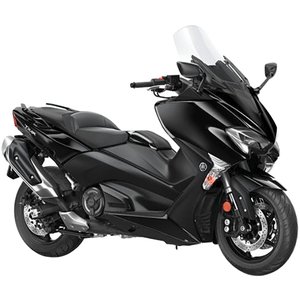Yamaha XP 500/530/560 T-MAX (2008-2011): The Maxi-Scooter That Redefined Urban Mobility 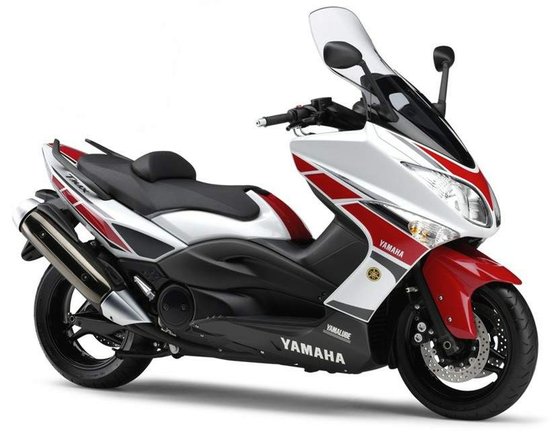
Introduction
When Yamaha launched the TMAX in 2001, it created an entirely new category: the maxi-scooter. The 2008-2011 generation (codenamed XP 500/530/560) refined this formula into a machine that blends motorcycle-like dynamics with scooter practicality. After spending a week with a 2011 TMAX Tech Max ABS, it’s clear why this model remains a benchmark in the segment—even by modern standards.
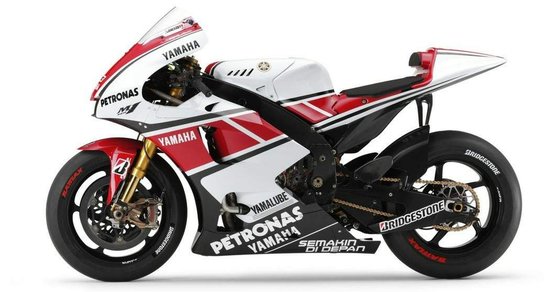
The 2011 TMAX Tech Max ABS in its iconic silver/black livery, showcasing its aggressive front fascia and sporty proportions.
Design & Ergonomics: Where Sport Meets Utility
The TMAX’s design language screams "scooter with a superiority complex." Its 2,195 mm (86.4 in) length and 1580 mm (62.2 in) wheelbase give it motorcycle-like road presence, while the 800 mm (31.5 in) seat height remains accessible for riders of varying statures. The die-cast aluminum chassis isn’t just for show—it shaved 5 kg compared to earlier models, bringing the wet weight down to 221-226 kg (487-498 lbs).
Key Design Highlights:
- Storage Savvy: The underseat compartment swallows a full-face helmet with room to spare. Two front gloveboxes (one lockable) hold phones/wallets.
- Rider Triangle: The floorboard-forward position and wide handlebars create a relaxed yet commanding posture. Pillion riders get fold-out footpegs and sculpted seating.
- Special Editions: The 2010 White Max (anodized accents, titanium wheels) and 2011 WGP 50th Anniversary (red/white racing livery) added collectible flair.
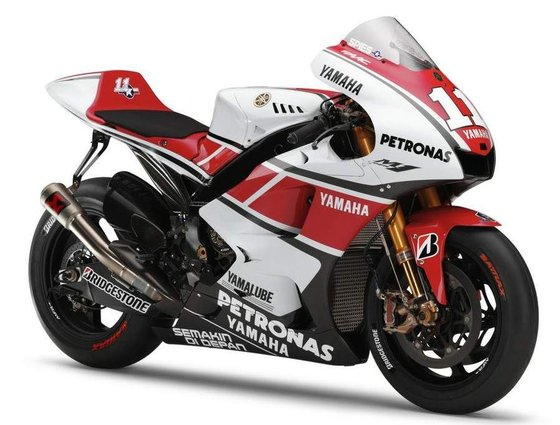
The illuminated underseat storage—a game-changer for grocery runs or weekend getaways.
Performance: Twin-Cylinder Thrills in a Scooter Body
At the heart of the TMAX lies a 499cc liquid-cooled DOHC parallel twin. With 42.9 HP @ 7,500 RPM and 46.4 Nm (34.2 lb-ft) torque @ 6,500 RPM, it’s overqualified for city duties. Yamaha’s CVT auto transmission eliminates shifting but retains a sporty character—especially when you pin the throttle from standstill.
Riding Impressions:
- 0-60 km/h (0-37 mph): 4.1 seconds (estimated)—enough to gap most traffic lights.
- Fuel Efficiency: 5.0 L/100 km (47 mpg) makes the 15L (4 US gal) tank good for 300 km (186 mi) ranges.
- Highway Manners: Stable at 130 km/h (81 mph), though wind buffeting becomes noticeable without an aftermarket screen.
The 43mm telescopic forks and rear swingarm suspension handle potholes with dignity, while the 15-inch wheels (120/70 front, 160/60 rear) offer crisp turn-in. ABS-equipped models (optional post-2009) inspire confidence with dual 267mm front discs and a single rear disc.

The 499cc parallel twin—notice the high-mounted exhaust for ground clearance during spirited cornering.
Competition: How the TMAX Stacks Up
Honda Silver Wing 600 (2008-2011)
- Pros: Larger 582cc engine, shaft drive, taller windshield.
- Cons: 263 kg (580 lbs) weight dulls agility; dated styling.
Verdict: Better for touring, worse for urban carving.
Suzuki Burgman 650 Executive (2008-2011)
- Pros: Heated seats, electric screen, CVT with manual mode.
- Cons: 279 kg (615 lbs) feels ponderous; higher seat (755 mm/29.7 in).
Verdict: A luxury barge vs. the TMAX’s sporty ethos.
Aprilia SRV 850 (Introduced 2012)
- Pros: 839cc V-twin, 76 HP, traction control.
- Cons: Arrived late to the party; 229 kg (505 lbs).
Verdict: The TMAX’s spiritual successor—but pricier.
TMAX’s Edge: Neither the heaviest nor most powerful, but the best balance of sportiness and practicality. Its aluminum frame and 15-inch wheels outhandle rivals, while the design ages better than bulbous competitors.
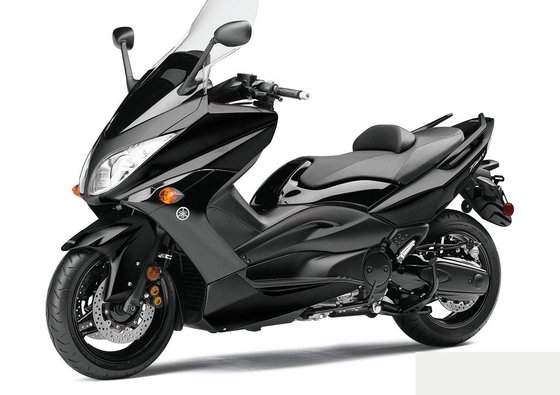
The TMAX’s cockpit—minimalist yet informative, with white-backlit gauges on special editions.
Maintenance: Keeping Your TMAX in Peak Form
As a MOTOPARTS.store journalist, I’d be remiss not to highlight key upkeep aspects:
- Belt & Rollers: The CVT belt lasts ~25,000 km (15,500 mi), but inspect rollers every 12,000 km (7,500 mi) for flat spots.
- Brakes: OEM pads can be swapped for EBC HH sintered pads (FA408/FA409) for better bite.
- Fluids:
- Engine Oil: 2.9L of 10W-30 JASO MA every 6,000 km (3,700 mi).
- Coolant: 1.48L of ethylene glycol mix every 2 years.
- Valve Adjustments: Every 42,000 km (26,000 mi)—intake 0.15-0.20 mm, exhaust 0.25-0.30 mm.
Pro Tip: Upgrade the stock windscreen with an MRA Variotouring screen (available at MOTOPARTS.store) for long-distance comfort.
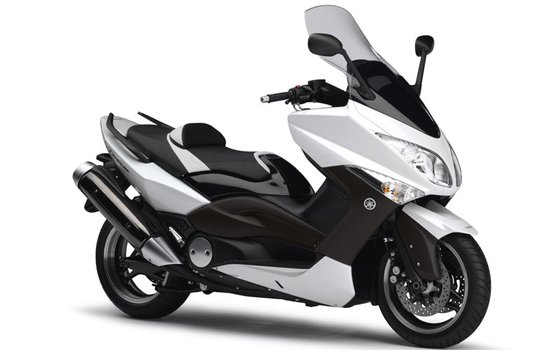
The TMAX’s exposed CVT cover—easy access for belt inspections and upgrades.
Conclusion: A Timeless Urban Warrior
The 2008-2011 TMAX isn’t just transportation—it’s a lifestyle enabler. Commuters appreciate its storage and ease, while twisty-road enthusiasts relish its chassis poise. While newer models have since emerged, this generation remains a sweet spot for used buyers seeking Yamaha’s reliability without sacrificing flair.
Whether you’re retrofitting LED lights, upgrading suspension, or simply replacing wear items, MOTOPARTS.store has the OEM and aftermarket support to keep your TMAX running like a Swiss watch.
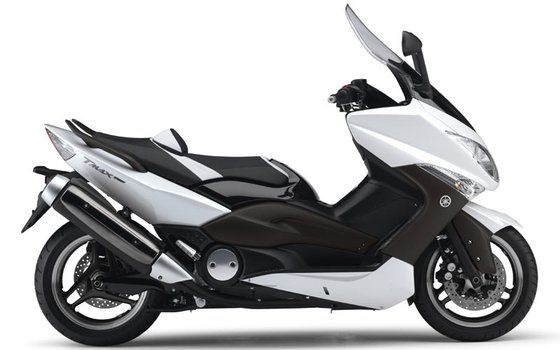
The TMAX in its natural habitat—equally at home in urban jungles and mountain passes.
Specifications sheet
| Engine | |
|---|---|
| Stroke: | Four-stroke |
| Max power: | 33.5 kW | 45.0 hp |
| Max torque: | 52.3 Nm |
| Fuel system: | Electronic Fuel Injection (Mikuni 34 mm throttle body) |
| Max power @: | 6750 rpm |
| Displacement: | 499 ccm |
| Fuel control: | Double Overhead Cams (DOHC) |
| Max torque @: | 5200 rpm |
| Configuration: | Inline |
| Cooling system: | Liquid |
| Compression ratio: | 10.9:1 |
| Lubrication system: | Semi-dry-sump |
| Number of cylinders: | 2 |
| Dimensions | |
|---|---|
| Wheelbase: | 1580 mm (62.2 in) |
| Dry weight: | 203 |
| Wet weight: | 218 |
| Seat height: | 800 mm (31.5 in) |
| Overall width: | 775 mm (30.5 in) |
| Overall height: | 1445 mm (56.9 in) |
| Overall length: | 2195 mm (86.4 in) |
| Dry weight (ABS): | 208 |
| Ground clearance: | 125 mm (4.9 in) |
| Fuel tank capacity: | 15 L (3.9 US gal) |
| Drivetrain | |
|---|---|
| Clutch: | Wet, multiple-disc automatic centrifugal |
| Final drive: | belt |
| Transmission: | Fully automatic CVT |
| Maintenance | |
|---|---|
| Engine oil: | 10W30 |
| Idle speed: | 1100–1300 rpm |
| Brake fluid: | DOT 4 |
| Spark plugs: | NGK CR7E or NGK CR7EIX |
| Spark plug gap: | 0.6–0.7 mm |
| Final drive oil: | 700 ml SAE 80 GL-4 |
| Coolant capacity: | 1.48 |
| Forks oil capacity: | 1.03 |
| Engine oil capacity: | 2.9 |
| Engine oil change interval: | Every 5000 km or 2 years |
| Valve clearance (intake, cold): | 0.15–0.20 mm |
| Valve clearance check interval: | 24,000 km / 15,000 mi |
| Valve clearance (exhaust, cold): | 0.25–0.30 mm |
| Recommended tire pressure (rear): | 2.5 bar (36 psi) solo, 2.8 bar (41 psi) with passenger |
| Recommended tire pressure (front): | 2.25 bar (33 psi) |
| Additional Features | |
|---|---|
| ABS: | Optional on select models |
| Storage: | Under-seat compartment (fits full-face helmet) |
| Carrying capacity: | 197 kg (434 lbs) |
| Emission standards: | Dual-chamber airbox, catalytic converter |
| Chassis and Suspension | |
|---|---|
| Frame: | Aluminium backbone frame (CF die-cast) |
| Rear tire: | 160/60-15 |
| Front tire: | 120/70-15 |
| Rear brakes: | Single 267 mm disc (ABS optional) |
| Front brakes: | 2 x 267 mm discs (4-piston calipers, ABS optional) |
| Rear suspension: | Swingarm with monoshock, 116 mm travel |
| Front suspension: | 43mm telescopic forks, 120 mm travel |



